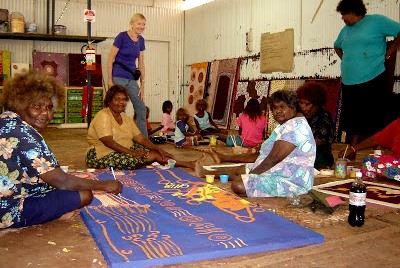Warakurna Artists from The Place That Calls You Home
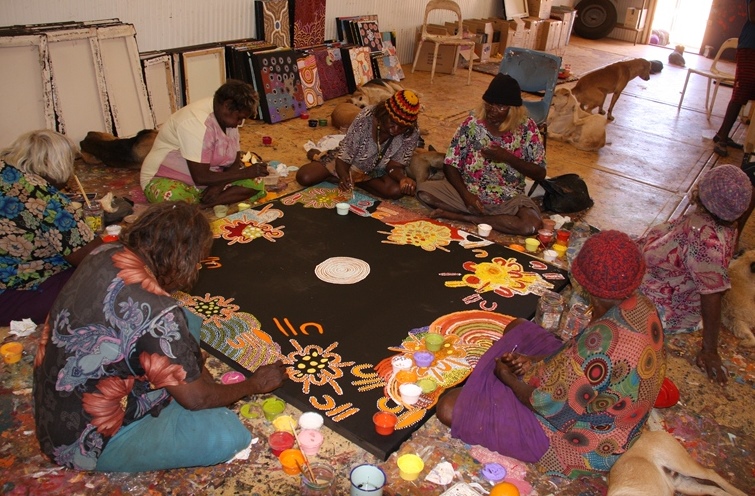
Jane Menzies is the Manager of Warakurna Artists. The remote community of Warakurna is situated on the Great Central Road in the Ngaanyatjarra Lands of Western Australia. It is about 330km from Uluru near the border with the Northern Territory.What is special about the community of Warakurna?
We’re blessed to live here. It’s a beautiful landscape. The community itself is nestled within the Rawlinson Ranges. The locals and the artists here call the ranges “Purli Yurliya”. They say that when you’re away from home, they cry for you to come back. There’s a strong pulling power back to Warakurna. It can make you homesick, even when you are an outsider like me. Sometimes when I leave and I can’t wait to come back.
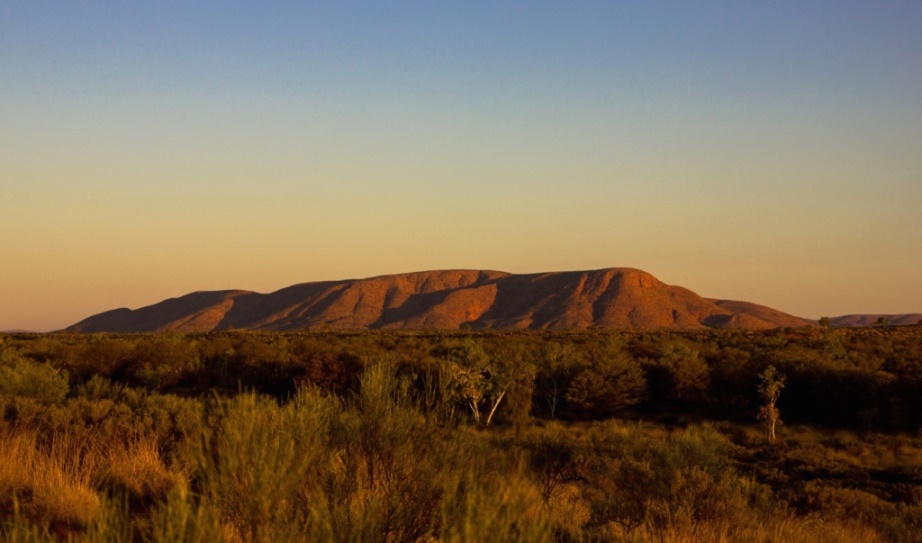
Three Communities
Can you tell us a little bit about the group of communities in this area?
Warakurna Artists is lucky working with the community and artists of Warakurna as well as running a weekly painting programme at the Aged Care Centre in Wanarn. In July 2015 Warakurna merged with Kayili Artists, which is based out of the renowned artist community of Patjarr. So we’re fortunate to have the opportunity to work with the artists from three different communities.
They have different stories as well as coming from different homelands. Warakurna Artists provides us with a base in Warakurna, that’s where we run our administration. We run the weekly programme at Wanarn Aged Care and then an outreach programme to the Kayili Artists in Patjarr.
The artists of Patjarr are quite transient. There is a core set of artists who live and work there. We conduct an outreach programmme usually once a month, so that we can connect the artists to country and Tjukurrpa providing an outlet for them to paint while on country. (Tjukurrpa refers to origins and powers embodied in country, places, objects, songs and stories.*)
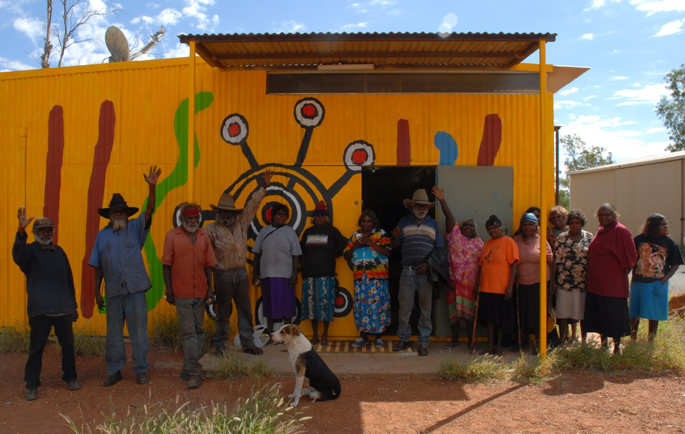
The Art Centre
What is the Art Centre like? How are the working conditions there?
We’ve got one here in Warakurna, it’s a shed essentially. We’ve got air conditioning, we’ve got clean working areas, but it’s pretty rustic. We have a main shed, which is where the artists paint. Then we’ve got an adjoining area out the back, which is where we do our canvas preparation and it’s our stockroom to store artwork. We do a lot of the studio work of mixing paints, priming canvas, being on hand for the artists in the main shed area. We’re actually hoping to obtain a grant this year to develop a new art centre, so fingers crossed we can get that over the line this year.
We need to really be moving with the times. I’d like to organise a working area where the younger artists can operate, to be more enfranchised in the Art Centre while having their own space. I’d also love to have different spaces for female artists, male artists and younger artists, as well as the communal area where people can gather. That way people feel like they’ve got space to do different activities. At the moment it’s just one relatively small area servicing many different functions.
Do the communities of Warakurna and Kayili work separately or together?
I’d like to start bringing some of the Warakurna artists, just a couple, to work and do the occasional workshop as part of our outreach program. Patjarr does have some beautiful sites that are significant for many different reasons, and significant to different families in Warakurna and Patjarr. We have combined bush trips when the Patjarr artists and Warakurna artists all come together to share those places and be on country together. I think that’s important and it forms part of how we move forward together.
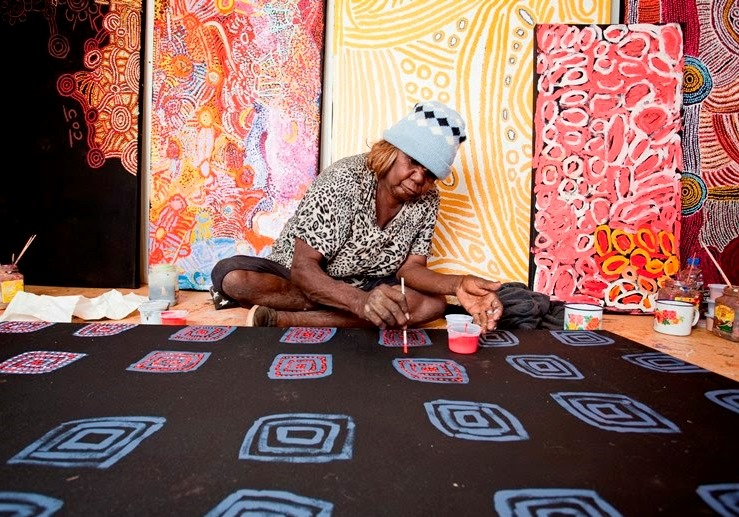
How’s the role of men and women in relation to the Art Centre? Do they do different types of work?
They have different stories that they paint, so there’s different Tjukurrpa for women and different Tjukurrpa for men. Their artworks will vary because of that. The women in the Art Centre will paint women’s stories and men will paint their stories.
Values
What are the main values and priorities of the Art Centre?
The main values and priorities of the people of the community within the Art Centre are to maintain the Art Centre for cultural longevity. They want to keep the practises and culture alive and strong. They also want to be able to provide an avenue or an outlet for educating the younger people as well through their stories and through their paintings. The Art Centre acts as an intermediary in that it provides artists with an opportunity to pass down important Tjukurrpa and culture. They want to pass down the legacy to future generations.
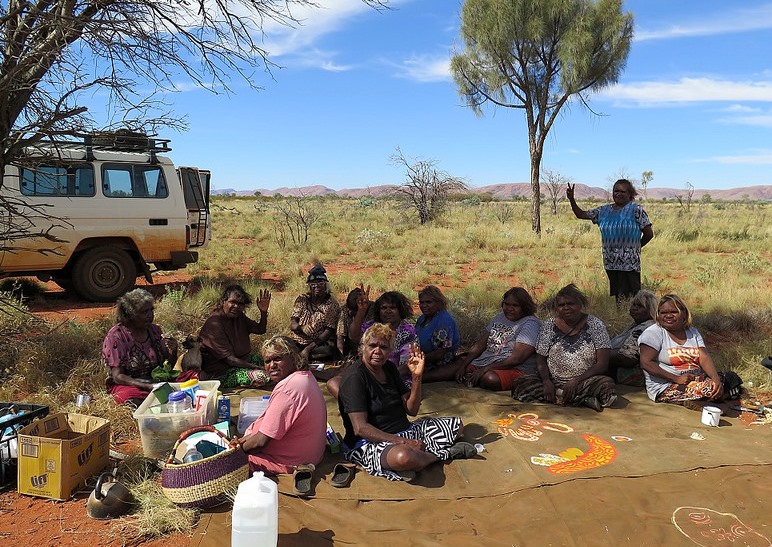
Cultural Knowledge Shared
How do the older artists to pass on their knowledge to the younger artists?
They do this through an ongoing process of bush trips on Country that involve young people. That is mostly how the transfer of information and knowledge occurs. Some of the money from the sale of art provides artists with the means to be taken back on Country with young people. That is the greatest opportunity for that transfer of knowledge to happen.
The Wanarn painting programme was developed with that priority in mind. It was designed to provide the older artists with an opportunity to share their culture and their knowledge through painting. Each week, at the Wanarn painting programme, there’ll be families that might stop by and younger people that might stop by. We often take members from Warakurna who have family at Wanarn Aged Care to be with family so that can happen.
There have been barriers definitely, and I guess the way to get around those barriers is to provide a means by which people are able to get back on Country to share those really important stories.
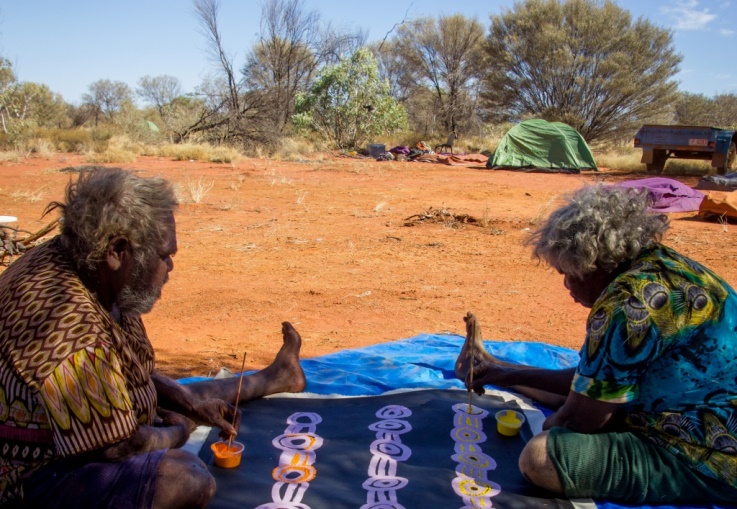
Benefits of An Art Centre
How does the community benefit from their Art Centre?
I guess there are many different benefits that come from having the Art Centre in the community. Firstly there is a financial outcome. Artists can’t necessarily live off what they make from the sale of their work at the Art Centre. It certainly provides a supplement and a revenue stream to the people. It gives the artists some income.
There are also health benefits by providing people with an opportunity to share culture in a happy environment. In this positive environment, painting can act as a bit of a therapy as well helping with health ailments.
It also brings money back into the community. The artists receive their money, and then those profits go back into the community to make their community stronger for them. I guess the benefits are three-fold. And it’s been shown within the first few years of the art centres opening, clinic visits have dropped dramatically and people’s well-being has become a lot better.
What makes a strong art centre do you think?
An art centre is strong when artists feel enfranchised like they are part of something that is meaningful to them. Having strong directors is important as this adds to the sense of being empowered. You also need to have direction. Without those things, it is quite hard to forge ahead. You’ve got to have a happy environment and a happy art centre. Without a happy art centre, you don’t have happy work.
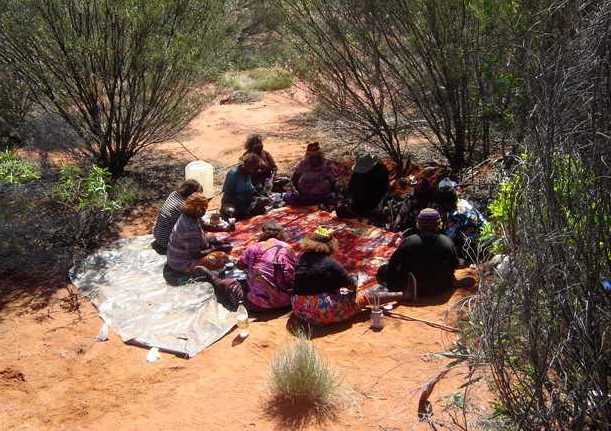
Is the remote location an advantage or a disadvantage?
I believe that the remote location is both an advantage and a disadvantage. It brings with it some difficulties regarding getting supplies in, bringing them out. There is a lot of wear and tear on our vehicles because of the road corrugations. That becomes an expense.
Alternatively we do have quite a unique situation that we can use to our advantage. We are a unique Art Centre based in the Ngaanyatjarra Lands in remote Western Australia. There’s no other place like it and the art offers an insight into that culture and that way of life.
I think it is important for people to understand that the artworks are made out here in this remote place. They’re catalogued out here. They are 100% Aboriginal created and owned. The Art Centre has been created for the people by the people, so we have that unique selling point. Everything that you buy from Warakurna Artists is 100% authentic and ethically produced.
What are the highlights of the year for the Art Centre?
One of the main highlights for Warakurna Artists in 2018 is definitely this exhibition at Japingka Gallery opening on the 23rd of March.
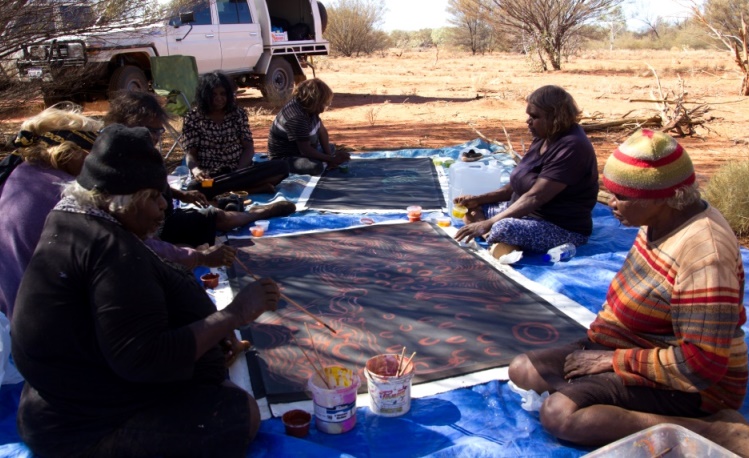
Challenges for Art Centres
What are the challenges for you running an art centre in these communities?
Travel is a big one. We have to do quite a lot of travelling to get to and from different communities and to different art centres and programmes that we run. Next would be access. It’s a challenge getting things in and getting things out. You just have to factor in that everything’s going to take a lot longer than it would normally. Communication can be an issue. Our internet speed is slow and there are outages and other problems. Those are some of the main challenges that interrupt our business service and our ability to provide efficient operations in the 21st century.
What’s the single thing that you think would make the most difference for the artists and the Art Centre?
I’d like to see more recognition for the importance of maintaining traditional culture and art. By that I mean specifically government recognition of the importance and significance of what the artists out here are doing on a daily basis. The artists don’t stop making, creating, practising culture. They are enterprising and strong, but they can’t afford to stop, because their Centrelink payments don’t provide enough to live on. So they are forced to work around the clock, making wooden artefacts, making woven objects, making paintings, just to provide a supplement to their Centrelink payments. A minimum wage would help the people out here a lot. I’d like to see more funding to be able to take artists back to Country. I’d also like to see funding to provide art centres with enough money to take others back on Country and to pass on that knowledge and to continue doing what they’re doing.
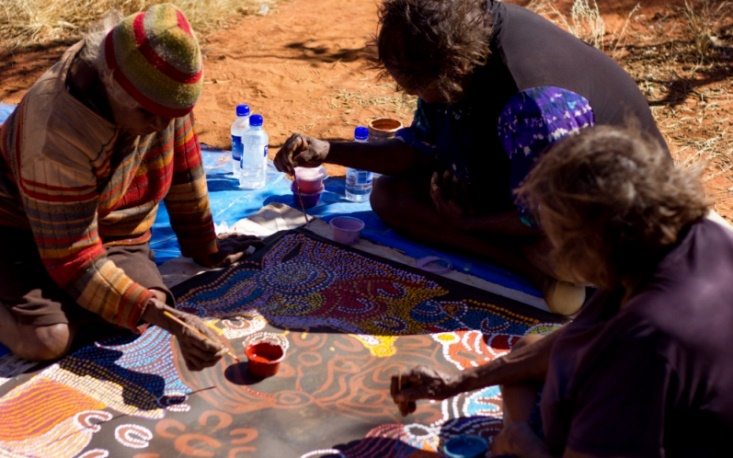
How Artists Benefit from Exhibitions
What do the community artists get out of an exhibition like this one at Japingka?
The artists get a lot out of an exhibition like this one. They have their paintings shown to an audience who may not have seen their work before. They’re able to extend a part of themselves, a part of their knowledge, this ancient knowledge to a new audience.
These are largely unwritten histories of Ngaanyatjarra and Aboriginal culture, times in history that may not have been documented. For the people of Warakurna, it’s a really special thing to be able to share those stories, be able to provide a snapshot of life out here. It also provides an opportunity to sell works, which has the potential to benefit the artists in their community and the broader community and families.
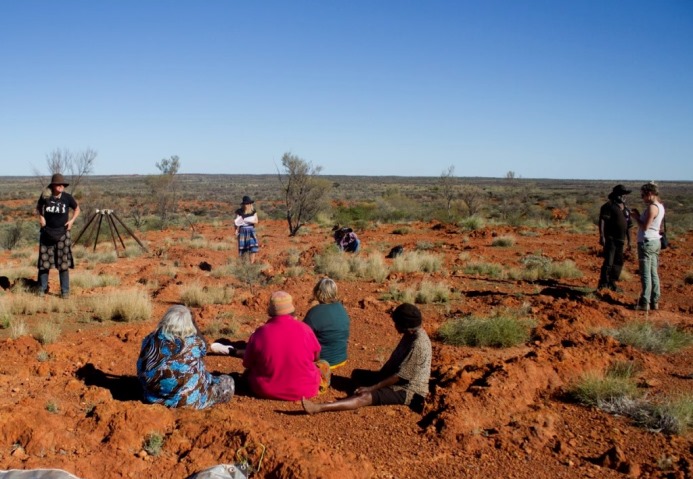
Art Centre Management Highlights
What do you enjoy most about being an art centre manager?
No one day is the same. There’s no getting bored with the work. I love that. I love that I get the opportunity to share in this amazing part of Australia that so many people will never get an opportunity to see. They won’t come through here because it is so remote. That makes me feel privileged and honoured to share in that opportunity. I appreciate that the people here have welcomed me and let me stay as long as they have. I’m grateful for that. I value the opportunity to gain insight into this ancient culture. I get to work with some fantastic people. I find them thoughtful, caring, and quite funny. They have a great sense of humour. I feel blessed to be surrounded by this beautiful artwork on a daily basis. You can’t get much better than that.
The Future for Warakurna
How do you think the future looks for Warakurna?
The future looks bright for Warakurna. We’re moving into a really interesting time right now, we’ve got a lot of young people coming up. It’s an exciting time. Our older artists are maturing as well, and we continue to work with them. We’re providing more and more means for younger people to be involved. We’ve got the Streetwear project, and we’re looking to go on with other projects focusing on the youth. We are developing their profiles and their careers slowly but surely. So watch this space.
* Source: Western Australian Museum
